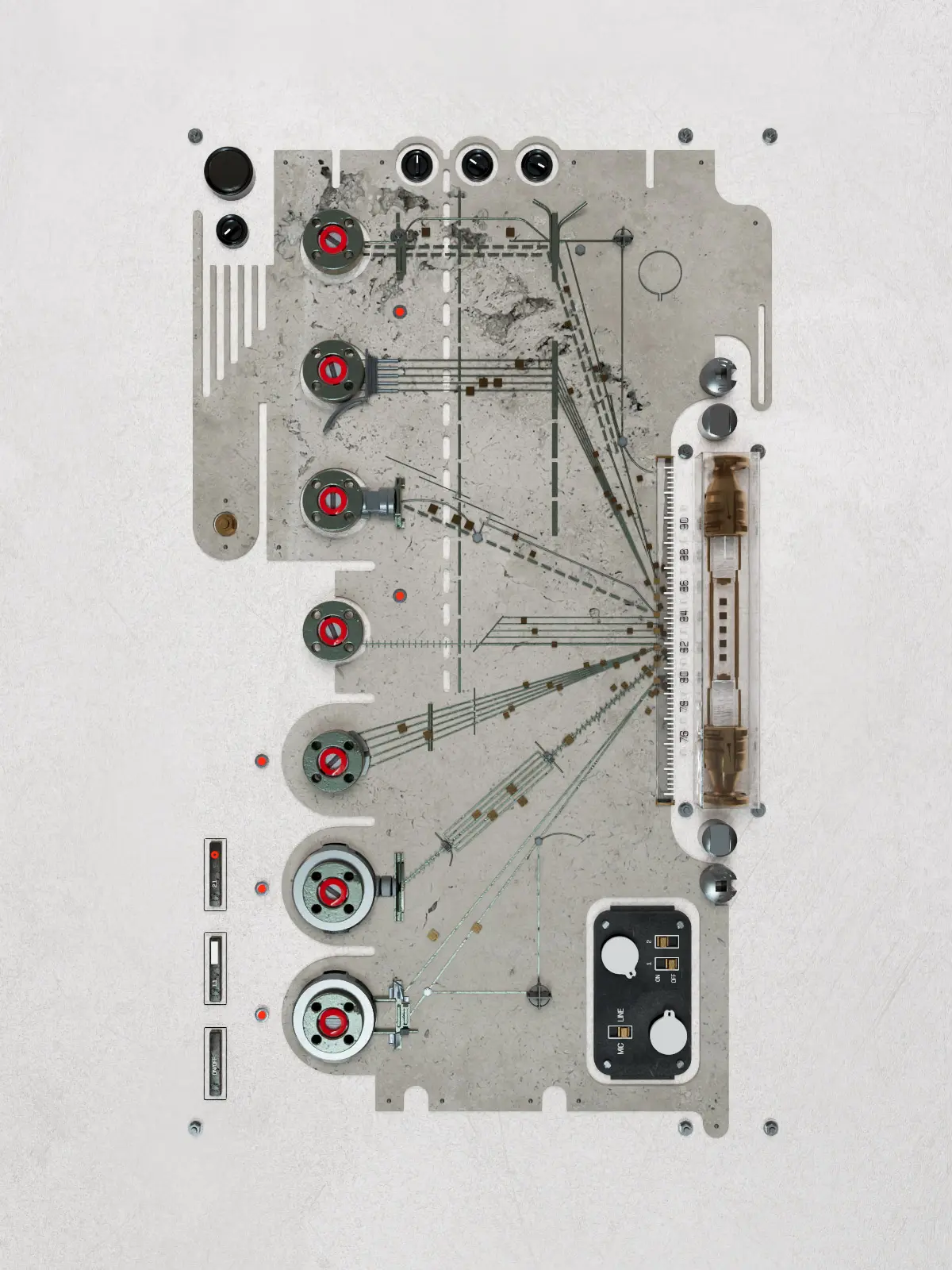Creative exchange 01
- Date Created12 January 2024, 10:01

These graphic notation images are the result of months of visual training, research, and experimentation.
By deconstructing the conventional systems and structures of musical scores, I reconstructed them in my own visual language, bridging traditional notation with modern instrumental equipment and circuit devices.
In the beginning of concretizing the image, I initially wanted to express something that remains historically through the keyword “artefacts” and the classicism of graphic notation.
How ground can be used to represent scores ? The idea of creating a sense of ripples, as if the frequencies were spreading out from the main object. Searched for graphical scores that have a circular shape.
Restarted over based on the structure of the metal. Practiced creating a structure with a pentatonic staff and creating a kinetic sculpture within it using musical notes, digits from a metronome, and a scale line.
Turned back to the matte Pflaster material, thought it is better for the expression of Abstractness. Added some curvy staff lines and unregular pencil traces.
As an improvisation and as an experiment, I added more layers to create a more intriguing image by introducing a slight sense of dimensionality—through the arrangement of multiple rectangles and floating musical notes.
The varied colors and heightened abstraction prompt a renewed consideration of the image.
At this point, I decided to expand beyond 2D graphics by incorporating a synthesizer, edited into a graphic notation structure. This approach allows for a more structured exploration, connecting classical and modern design elements through circuit-based, symbol-based, and other varied graphic score constructions.
My goal was to deconstruct the concept of classical sheet music and create a structure that resists immediate legibility, one that invites interpretation. Working as a visual artist, this project taught me how to reinterpret existing graphic notation images, transforming them into something that exists between music and pure visual language. The process challenged me to think about how both musical and visual literacy can be questioned, and how viewers might navigate meaning in their own way.
![]() fig. 1
fig. 1![]() fig. 2
fig. 2![]() fig. 3
fig. 3![]() fig. 4
fig. 4![]() fig. 5
fig. 5![]() fig. 6
fig. 6
















































